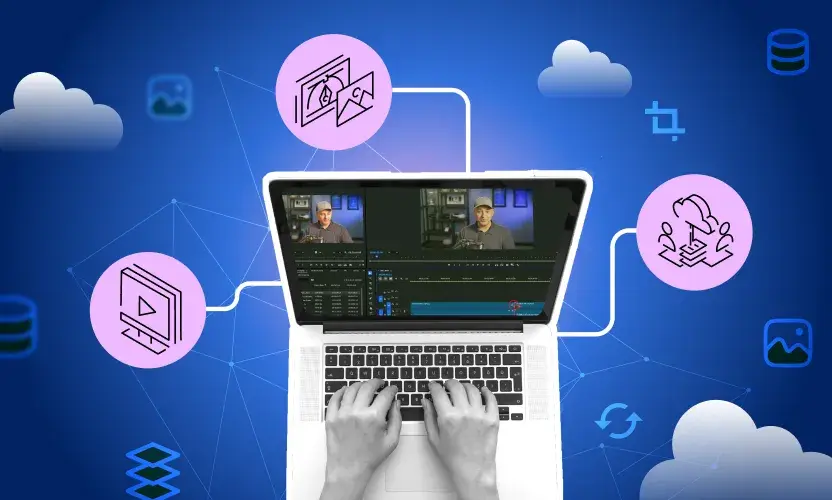
Modernize and Migrate to Egnyte to Replace Your Windows File Server
For decades, Microsoft’s Windows Server has been a mainstay for businesses of all sizes, most notably as a file server. However, as companies adapt to remote work, increasing cyber threats, and growing data privacy regulation, many are considering shifting their Windows file server to the cloud—or replacing it altogether.
Egnyte is a great fit for companies looking to migrate their Windows file server to a modern platform designed for the new way of work. Of course, any move off an IT stalwart comes with trepidations: Is it worth the effort? How difficult is the migration? Will my users be impacted?
In this blog, we’ll address these questions and more. Find out why now is the time to make the move, and discover how simple it is to migrate to Egnyte.
Why Replace Your Windows File Server?
Hosting your own Windows file server carries myriad challenges, not all of which are obvious. Here are some of the biggest direct and indirect impacts of procuring and maintaining these on-premises servers.
Server Cost
Your Windows file server has many costs associated with it. Software licensing is often the first one that comes to mind, but the hardware itself has real costs, too—specifically, upfront capital and lifecycle operations expenses. The capital expenses typically need to be depreciated over several years, as the hardware becomes obsolete or is outgrown.
You may need to replace a file server before it’s fully depreciated, which adds to expenses. There are also very real operations costs associated with managing and maintaining both the software and hardware. You’ll need expertise on staff to handle maintenance, pulling them away from more important projects.
Additional Resource Costs and Complexity
Off-site redundancy—hot or cold storage for backups and archiving—also adds cost, complexity, and, ultimately, risk to what should be a simple storage solution.
In addition, there are associated network requirements—including services and security—that add to the complexity. Many organizations manage VLANs and require additional network services to maintain files servers in their environment. These also add complexity and cost.
Regulatory Burdens
If your organization falls under regulatory control, your file server and infrastructure may need to meet additional compliance requirements. For example, if you have international customers, you may need to comply with GDPR, even if you don’t have an office in the EU. Also, companies within regulated industries must meet U.S. regulations such as SOX, HIPAA, and FINRA.
Larger organizations may also have self-imposed internal compliance requirements. All these compliance requirements add cost and complexity due to specific configuration, documentation, and auditability needs.
Outdated Technology
Many on-premises file servers fail to meet new end-user expectations. Employees who no longer return to the office every day want easy mobile and remote access. They’ve also grown to dislike VPNs and often bypass policies around them when possible. Worse, many workers create shadow IT solutions as they implement their own consumer-grade cloud solutions.
What Do I Need?
If you’re considering a move off your Windows file server, you’ll want a replacement that causes the least disruption to your company’s current business and workflows. Here are the minimum requirements for a file server replacement:
- A centralized but simple folder structure that employees are familiar with
- Granular NTFS-like folder permissions
- Encryption at rest and in flight
- Integrations with Active Directory (AD) and popular single sign on (SSO) solutions, to reduce management overhead
- A consistent, functionally equivalent experience with no new passwords to remember
What Do I Want?
The minimum requirements are just that—minimums. A next-generation file solution should go beyond the status quo and provide added value that helps produce better business outcomes. Here are just some of the features that seem like “nice to haves” but may ultimately be essential components of modernizing your IT operations:
- Centralized reporting and auditing
- Full data protection and content classification
- For larger offices, local caching provides advanced bandwidth optimization on the WAN links
- Global file locking and unlimited versioning, for flexible collaboration and ease of use
In addition, your users will want these features:
- The ability to set up their own guest access to user-selected folders
- Truly connected mobility to be able to preview, download, and edit on mobile devices
- True system-wide context sensitive search to quickly and easily find document
- Integrations with online editing tools from Microsoft and Google
Egnyte provides all of these capabilities and more, making the transition easier for end users and IT, and expanding your company’s ability to securely support workers from anywhere.
How It Works
Now that we’ve shown you the benefits of migrating your Windows file server to Egnyte, let’s go over how easy the process is.
First, the Egnyte Desktop App is installed on Desktop Windows and Mac machines in the office. Once installed, this app connects to the Egnyte cloud domain and can make it appear as a drive letter (on Windows machines) or a drive on Macs.
Then the files are migrated from your Windows File server to the cloud. This typically happens over a weekend with help from Egnyte support. Your IT team will need to install the Egnyte desktop app on each user machine prior to the transfer, and then install a small migration app in your environment with support from Egnyte Professional Services.
Once started, the app will scan the server, begin transferring up to 4 TB of data, and then verifies the data has arrived in the Egnyte cloud. Depending on network speeds, this may take up to four hours. However, all of this is automated so it can be left unattended. It even recovers from network disruptions automatically.
If you have more than 4 TB, simply schedule multiple jobs on the app. When users return Monday morning, the drives that were mapped to the old Windows File server have been remapped to the Egnyte domain seamlessly, perfectly emulating the old Windows File Server. The folder structures and permissions have all been preserved. The experience is identical, so users are not disrupted. In fact, many don’t even realize the change has happened.
The new letter drive will act the same way as before. Users can click on a file to open it, and applications that access letter drives will also operate as before.
Editor’s note: For those who want to handle the migration themselves, there is a new self-service capability, which is in limited availability. The process typically takes one to two business days to complete.
Additional Benefits
In addition to the remapped drive, you also have the choice to sync other user folders to Egnyte, including desktop and document folders. This provides backup services to desktop machines, and all the files will appear in each user’s private folder in the Egnyte domain.
In addition, by right-clicking a file, the user can download a file and store it locally, which will remain synced with the master version in the Egnyte cloud. This way, if a file is edited offline, it is quietly resynchronized to the Egnyte cloud in the background whenever the user rejoins a network.
You can retire your old Windows file server; or, if you operate a larger office, you can repurpose the server as a local cache machine to the Egnyte repository. This stores frequently used files locally to reduce WAN bandwidth, while still remaining synced to the Egnyte cloud in the background.
Users will soon discover the benefit of the added features, such as:
- They no longer have to use a VPN for remote access.
- They can install apps to access their files on mobile devices when away from the office.
- They have new browser-based access to their files, which provides an even richer experience for handling workflows and sharing content.
- They can collaborate in real-time in Microsoft 365 and Google Workspace and globally lock files as needed.
Because Egnyte stores older versions of all files, a user can revert back to a previous version without help from IT, if necessary. However, if a large number of files are deleted or attacked by ransomware, Egnyte offers additional snapshot capabilities that can restore large folder structures containing thousands of files. This capability is included in Egnyte’s Enterprise plan, and it can be added as a package to some lower-level plans.
Users will also discover the more granular permission structure, which allows data owners to establish permissions on their own folders. They can even designate folders to safely invite external users with highly limited permissions to only preview or download files, or invite them to upload files to unique folders.
Start Your File Server Modernization Today
Egnyte provides a familiar user experience to make the transition simple and painless. However, users will soon grow to love the enhanced capabilities provided by the platform, resulting in greater productivity and satisfaction. Meanwhile, your administrators will find the Egnyte domain much easier to manage, with greater visibility than the legacy file server it replaces. Finally, although Egnyte provides users with greater flexibility, it also provides greater security and availability. Contact your Egnyte representative today to learn more.





